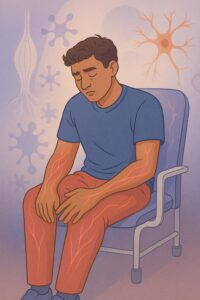Guillain-Barré Syndrome (GBS) is a rare autoimmune neurological disorder in which the body’s immune system attacks the nerves outside the brain and spinal cord (peripheral nerves). This leads to muscle weakness, numbness, and sometimes paralysis, usually starting in the legs and spreading upward.
Most people develop GBS after an infection, such as the flu, a stomach virus, or COVID-19. GBS is considered a medical emergency, but most people recover with proper care.

